Trees Birds Mammals Fish Amphibians Reptiles
Wild Algarve
Bookshop
Entoloma madidum Gillet - Brightsky Pinkgill
Phylum: Basidiomycota - Class: Agaricomycetes - Order: Agaricales - Family: Entolomataceae
Distribution - Taxonomic History - Etymology - Identification - Culinary Notes - Reference Sources
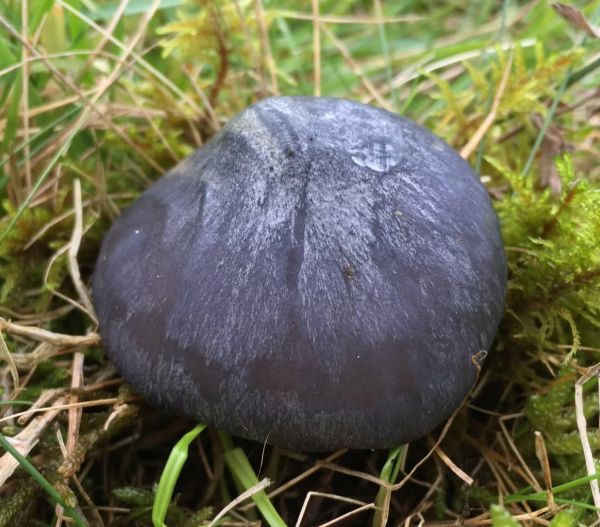
This largish (for an Entoloma) mushroom is a rare find in Britain and Ireland, and microscopic study of spores is necessary to seprate it from other macroscopically similar bluish pinkgills. (The specimens shown on this page were verified by molecular sequencing.)
Distribution
Entoloma madidum is a rare find in Britain. This pinkgill occurs also in parts of mainland Europe including Norway, The Netherlands and Italy, in all of which it is localised and either a rare or just a very occasional find. The pictures shown on this page were taken in Cornwall, southern England.
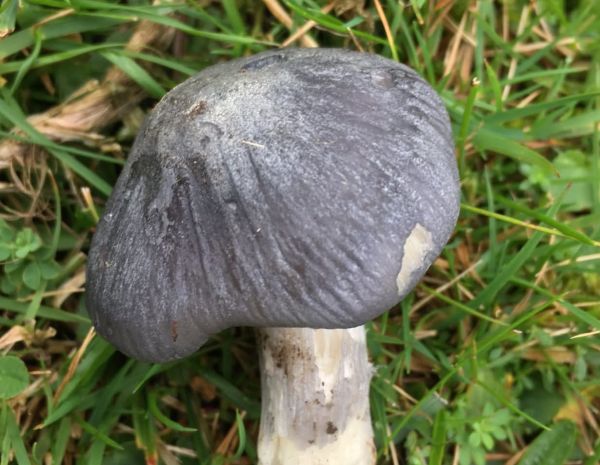
Taxonomic history
When in 1878 French mycologist Claude-Casimir Gillet described this pinkgill mushroom, he gave it the scientific name Entoloma madidum by which it is still generally referred to today; however, the distinction between Entoloma madidum and Entoloma bloxamii was not clearly understood until recently, and so, inevitably, several synonyms exist.
Synonyms of Entoloma madidum include Agaricus madidus Fr., and Rhodophyllus madidus (Gillet) Quel.
Etymology
The generic name Entoloma comes from ancient Greek words entos, meaning inner, and lóma, meaning a fringe or a hem. It is a reference to the inrolled margins of many of the mushrooms in this genus.
The specific epithet madidum is derived from Latin and means moist or wet.
Identification guide
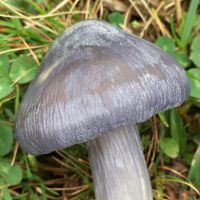
|
Cap
3 to 8cm across; initially conical with an inrolled margin, becoming plano convex with a slight umbo and a wavy downturned margin, not striate; surface slightly greasy when fresh, bluish with a violaceous tinge, with inate silky radial fibrils; flesh firm and white. |
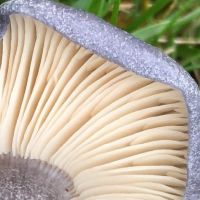
|
Gills
Adnate-decurrent, moderately crowded; edge irregularly serrulate; white becoming pink at maturity. |
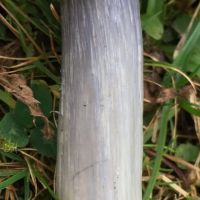
|
Stem
Cylindrical, longitudinally fibrillose; 4 to 9cm long and 1 to 2cm diameter; colour as cap but fading to white or yellowish white at the base; no stem ring. |
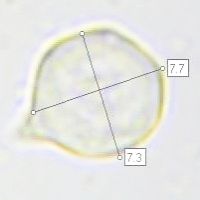 |
Spores
Angular (6 to 8 angles in side view), subglobose, 5.9-7.6 x 5.8-7.5μm; Qav=1.03.
Spore print
Pink. |
Odour/taste |
Not distinctive. |
Habitat & Ecological role |
Solitary or in small groups in unimproved grassland, sometimes under oaks or birch trees. |
Season |
Fruiting in summer and autumn in Britain and Ireland. |
Similar species |
This mushroom may be poisonous; it could be confused with Entoloma bloxamii and other big bluish species in the Entoloma genus. |
Culinary Notes
Entoloma madidum is very rare and should not be gathered except for necessary scientific study. Its edibility is suspect and it has no culinary value.
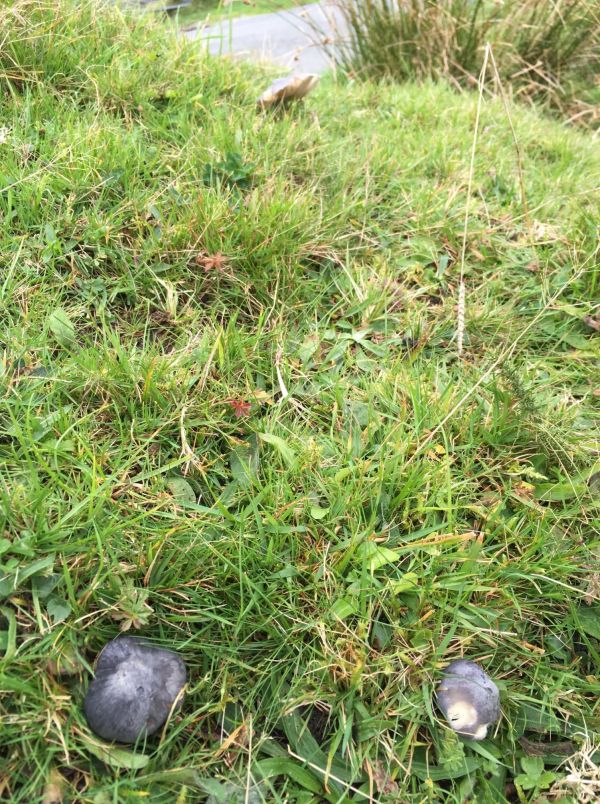
Reference Sources
Fascinated by Fungi, 2nd Edition, Pat O'Reilly 2016, reprinted by Coch-y-bonddu Books in 2022.
Knudsen H., Vesterholt J. (eds) Funga Nordica: agaricoid, boletoid and cyphelloid genera - Nordsvamp, 2008
Dictionary of the Fungi; Paul M. Kirk, Paul F. Cannon, David W. Minter and J. A. Stalpers; CABI, 2008
Taxonomic history and synonym information on these pages is drawn from many sources but in particular from the British Mycological Society's GB Checklist of Fungi.
Acknowledgements
This page includes pictures kindly contributed by Simon Harding.
Top of page...
Fascinated by Fungi. Back by popular demand, Pat O'Reilly's best-selling 450-page hardback book is available now. The latest second edition was republished with a sparkling new cover design in September 2022 by Coch-y-Bonddu Books. Full details and copies are available from the publisher's online bookshop...